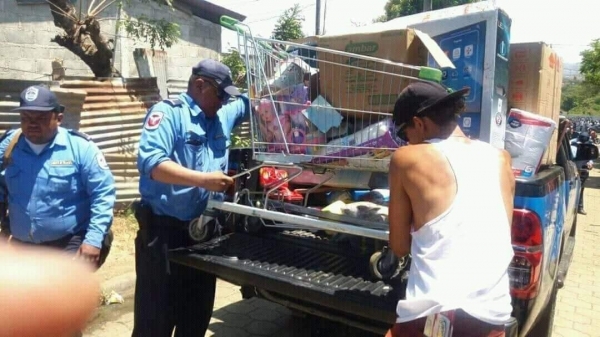WILLIAMSVILLE — The country of Nicaragua: Students, elders, and private industries started a peaceful protest Wednesday, April 18 regarding the 5 percent reform announced two days earlier by the country's president, Daniel Ortega.
The cuts targeted Social Security, including an increase of the quotas of workers and employers up to 22.5 percent and a 5-percent tax on current and future pensions.
These measures provoked a strong rejection and protests throughout the country.
As a response, the government sent armed forces and police in riot gear to remove the protesters through intimidation. The armed forces used rubber bullets, tear gas, fireworks, mortars, blank and live ammunition, and physical violence.
In addition, Ortega has ordered the Sandinista Youth (youth organization that supports the Sandinista party led by Vice President Rosario Murillo) to ally with the government troops, assisting them in taking water, food, and medicine from local townships whose people had collected them in support of the university protesters.
In return, the Sandinista Youth were provided with firearms, explosives, and knives with the order to aggressively remove the protesters from the streets.
* * *
On the second and third days of the protests, Nicaragua organized another peaceful protest: a march in white shirts in solidarity with the university students.
The government replied by removing all private media, shutting down power to different districts, shuttering all hospitals to avoid providing medical care for protesters, and shutting off water in multiple departments.
With the media gone, that night, the crackdown began in earnest, with reports of deaths, mild and severe injuries, and a serious increase in police presence throughout the country.
Thursday, people who had sought refuge in the Managuan Cathedral were surrounded and prevented from leaving by police and the Sandinista Youth. Snipers were positioned on the National Stadium roof, with orders to prevent anyone from entering or leaving either the cathedral or the UNI (National University of Engineering).
Shots were fired, and at least four were reported to have been killed.
Many others were injured by members of the Sandinista Youth, who forcibly entered the cathedral to retrieve water and food that had been gathered there. These actions were condemned by bishop Silvio José Báez.
Later that night, after shutting the university's and cathedral's electricity, the Sandinista Youth and police entered the building and removed nursing students, who were providing medical assistance to injured protesters.
They then set fire to medical wings of the university to prevent further assistance or shelter.
* * *
On Friday night, after a failed attempt to dialogue and continued peaceful protests taking place largely at UPOLI (Polytechnic University of Nicaragua), the government deployed military troops throughout the capital and neighboring departments (the country's geographic divisions).
The military and police also surrounded UPOLI, where shelter was being provided to protesters and those injured throughout the day.
Shots were fired, killing many; others were injured when the police and Sandinista Youth attempted to enter the facility through the protest.
* * *
On Saturday morning, a community of surrounding districts joined the protest at UPOLI and encircled the building, protecting those inside from the government forces.
Later in the day, reports of looting started. The state blamed the protesters, but the protesters contest that in some cases government troops removed items from stores to give the appearance of looting in an attempt to delegitimize the protest.
Grocery stores were also emptied. Access to food and water became a looming concern for not only the protesters, but also the residents of Managua and nearby departments, as all facilities were still cut off and rolling blackouts were still seen throughout the region.
Though independent channels and news outlets were shut down, government stations continued to report the news. Their reports portrayed the protesters as having caused the fires at UNI and having thwarted police involvement and presence outside of keeping peace at protests. Reports also claimed that most of the deaths at protests had resulted from either gang violence or protesters who had shot one another.
* * *
On Sunday, Ortega backed off from his social security reform and immediately called for an end to all protest.
However, police, Sandinista youth, armed forces, and uniformed military troops had not changed in their position or posture. They have continued to attack anyone attempting to continue protests, which have gone from being centered around the reform to being largely about the actions of the government following the peaceful protests.
As I write this, on Monday, April 23, the people of Nicaragua are being stifled by the government. They are hungry, out of water, and unarmed against armed government forces.
There are 103 people who have been detained and denied food, some of them for five days. University students are still protesting, with the goal of getting Ortega out of power. Nicaragua is determined to continue demonstrating until this occurs. The Nicaraguan people are desperately hoping to receive international aid in their struggle.
Protestors want their voices to be heard, but the world doesn't seem to be watching.
